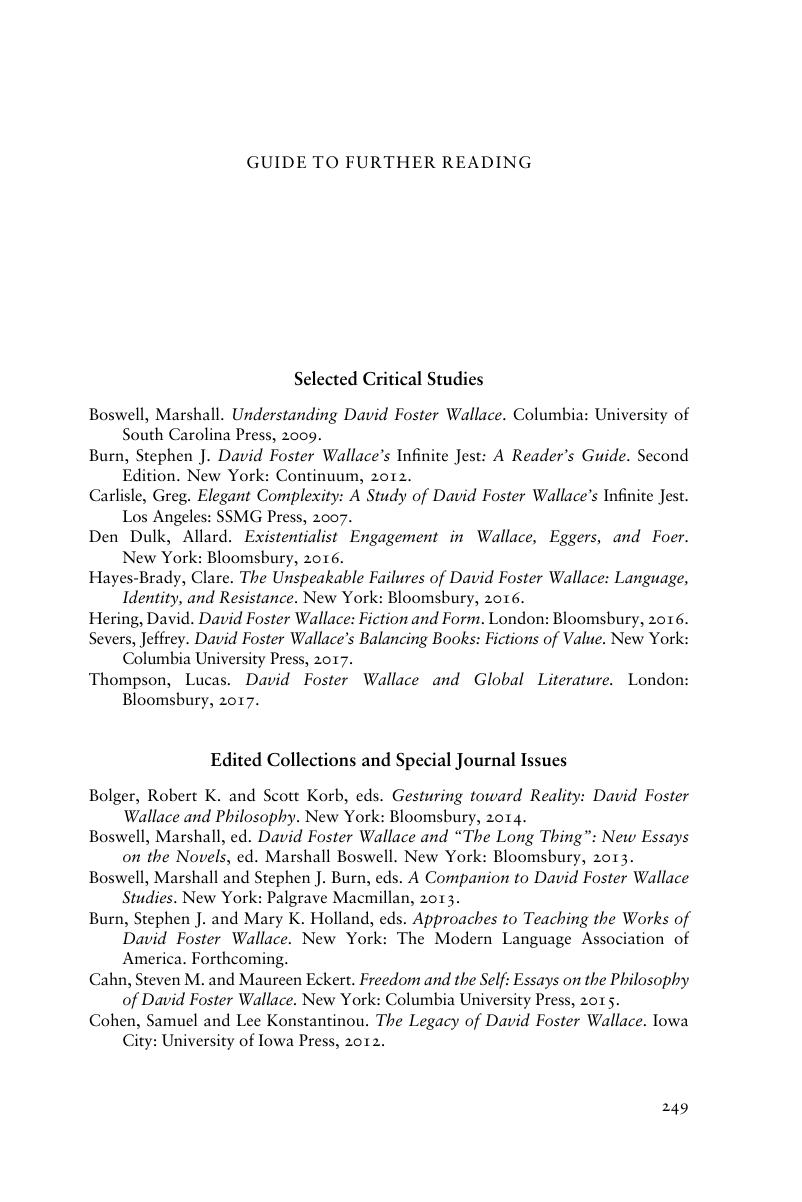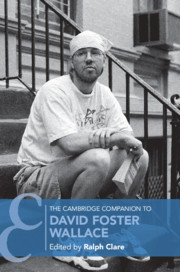Book contents
- The Cambridge Companion to David Foster Wallace
- The Cambridge Companion to David Foster Wallace
- Copyright page
- Dedication
- Contents
- Notes on Contributors
- Acknowledgments
- Chronology
- Introduction: An Exquisite Corpus: Assembling a Wallace without Organs
- Part I Historical and Cultural Contexts
- Part II Early Works, Story Collections, and Nonfiction
- Part III The Major Novels
- Part IV Themes and Topics
- Guide to Further Reading
- Works by David Foster Wallace
- Index
- Cambridge Companions to …
- References
Guide to Further Reading
Published online by Cambridge University Press: 07 September 2018
- The Cambridge Companion to David Foster Wallace
- The Cambridge Companion to David Foster Wallace
- Copyright page
- Dedication
- Contents
- Notes on Contributors
- Acknowledgments
- Chronology
- Introduction: An Exquisite Corpus: Assembling a Wallace without Organs
- Part I Historical and Cultural Contexts
- Part II Early Works, Story Collections, and Nonfiction
- Part III The Major Novels
- Part IV Themes and Topics
- Guide to Further Reading
- Works by David Foster Wallace
- Index
- Cambridge Companions to …
- References
Summary

- Type
- Chapter
- Information
- The Cambridge Companion to David Foster Wallace , pp. 249 - 252Publisher: Cambridge University PressPrint publication year: 2018



